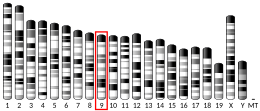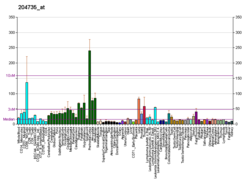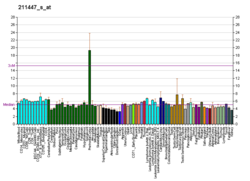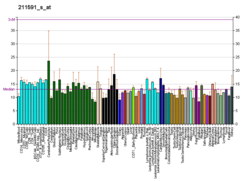PDE4A
Protein-coding gene in the species Homo sapiens From Wikipedia, the free encyclopedia
cAMP-specific 3',5'-cyclic phosphodiesterase 4A is an enzyme that in humans is encoded by the PDE4A gene.[5][6]
| PDE4A | |||||||||||||||||||||||||||||||||||||||||||||||||||
|---|---|---|---|---|---|---|---|---|---|---|---|---|---|---|---|---|---|---|---|---|---|---|---|---|---|---|---|---|---|---|---|---|---|---|---|---|---|---|---|---|---|---|---|---|---|---|---|---|---|---|---|
 | |||||||||||||||||||||||||||||||||||||||||||||||||||
| |||||||||||||||||||||||||||||||||||||||||||||||||||
| Identifiers | |||||||||||||||||||||||||||||||||||||||||||||||||||
| Aliases | PDE4A, DPDE2, PDE4, PDE46, phosphodiesterase 4A | ||||||||||||||||||||||||||||||||||||||||||||||||||
| External IDs | OMIM: 600126; MGI: 99558; HomoloGene: 4520; GeneCards: PDE4A; OMA:PDE4A - orthologs | ||||||||||||||||||||||||||||||||||||||||||||||||||
| |||||||||||||||||||||||||||||||||||||||||||||||||||
| |||||||||||||||||||||||||||||||||||||||||||||||||||
| |||||||||||||||||||||||||||||||||||||||||||||||||||
| |||||||||||||||||||||||||||||||||||||||||||||||||||
| |||||||||||||||||||||||||||||||||||||||||||||||||||
| Wikidata | |||||||||||||||||||||||||||||||||||||||||||||||||||
| |||||||||||||||||||||||||||||||||||||||||||||||||||
Function
The protein encoded by this gene belongs to the cyclic nucleotide phosphodiesterase (PDE) family, and PDE4 subfamily. This PDE hydrolyzes the secondary messenger, cAMP, which is a regulator and mediator of a number of cellular responses to extracellular signals. Thus, by regulating the cellular concentration of cAMP, this protein plays a key role in many important physiological processes.[6] Recently, it has been shown through the use of PDE4A knock out mice that PDE4A may play a role in the regulation of anxiety and emotional memory.[7]
Clinical significance
PDE4A inhibition is a target of a number of drugs including:[8][9][10]
- rolipram (antidepressant and antiinflammatory) and cilomilast (antiinflammatory) – inhibits PDE4A isoforms 1, 2, 6, and 7
- roflumilast (antiinflammatory) – inhibits PDE4A isoforms 1, 2, and 6
- tofisopam (anxiolytic with alleged antiinflammatory properties) – inhibits PDE4A isoform 1, PDE-10A1, PDE-3, and PDE-2A3
References
Further reading
Wikiwand - on
Seamless Wikipedia browsing. On steroids.







